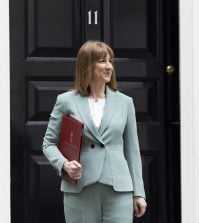UK civil service grappling with ethnic minority representation, study finds

Ethnic minorities are still “woefully underrepresented” in the British civil service despite attempts to improve diversity, according to the Institute for Government (IfG).
Analysis from the London-based think tank reveals that the percentage of ethnic minority representation in the civil service as a whole is lower than in the national population. And it is smaller still at senior levels, where progress in improving diversity has “stalled”.
Drawing on a number of data sources, the IfG said that in 2016 11.2% of all civil servants declaring their ethnicity identified themselves as black and minority ethnic (BAME) – up from 9% in 2010 and 4% in 1988. But the organisation said this was still below the national BAME population figure of 14% revealed in the 2011 census.
In the senior civil service, only 7.1% identify as BAME, according to the Office for National Statistics’ Annual Civil Service Employment Survey.
More encouragingly, the IfG found that diversity in the Fast Stream – the graduate programme designed to develop the next generation of leaders – is broadly in line with the national BAME population figure, at 14.2%.
The IfG also highlighted an ongoing problem for the UK civil service with discrimination against BAME staff. Giving their views in the 2016 Civil Service People Survey, 15% of BAME civil servants said they had experienced discrimination at work in the past year, compared to 12% of white civil servants. This is down from 18% in 2010, but the IfG said the gap hasn’t narrowed since 2011.
Report author Gemma Byrne acknowledged the civil service’s attempts to improve diversity, which began in earnest under Lord O’Donnell during his 2005-11 stint as cabinet secretary. After initial successes in improving the ethnic diversity of senior civil servants, the agenda stalled under the 2010-15 coalition government – when job losses and recruitment freezes halted the flow of officials into the senior civil service, and Cabinet Office minister Francis Maude steered away from a targets-based approach to strengthening diversity.
Current cabinet secretary Sir Jeremy Heywood has since put new impetus behind the agenda. But Byrne argued that the issue requires ongoing prioritisation by future governments. “Over the years there have been definite signs of improvement in the representation of ethnic minorities in the civil service,” she said. “However, the underrepresentation of ethnic minorities at the senior civil service level and the discrimination faced by BAME staff continues. Along with improving the diversity of the civil service as a whole, the next government needs to ensure that ethnic minorities within the civil service are equally represented at all grades.”
For up to date government news and international best practice follow us on Twitter @globegov
See also:
UK civil service ‘going backwards’ on diversity, survey finds
UK senior officials could lose bonus over diversity objectives





















I can’t see this changing with the current civil service set-up. Grass roots recruitment will always diverge from the average uk representation because geographic distribition of BAME populations is not evenly spread and many gov offices are not positioned to counter that affect. High level positions are increasingly recruited from high level private sector positions so civil service will either reflect that picture or the grassroots recruitment picture The ages tend to be older at a higher level so suffer from the BAME age demographic being different from UK average for that level of worker. The fact that fast stream recruitment is not geographically constrained or biased towards experience and consequently age explains why the represenation appears correct in that cadre